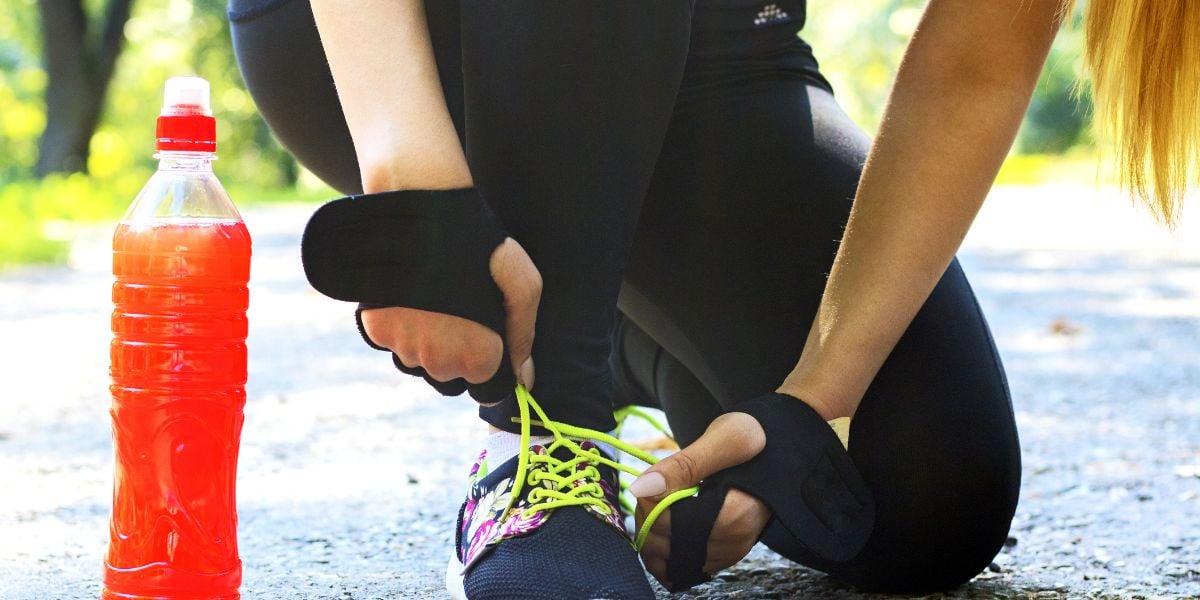When people with diabetes participate in sport, whether they are children or adults, it is quite possible that they will experience low or high blood sugar levels.
If you are on blood glucose lowering medication (e.g. tablets or insulin ) it is recommend to more frequently test your blood glucose levels during and after exercise to see how your sugar levels are responding.
Be wary of hypos
Low blood sugar, hypoglycemia , can occur during or after exercise when the body has used a high level of its stored sugar (glycogen).
People taking glucose lowering medications should be aware of the risk of hypoglycemia that sport can present.
Sport can cause the body to be more sensitive to insulin for up to 48 hours after exercising and people on insulin may need to take this account, particularly when next going to sleep after exercise to avoid hypos during the night
Hyperglycemia and sport
High blood sugar, hyperglycemia , can also occur during exercise, particularly after short bursts of strenuous activity.
Strenuous activity produces a stress response which sees the body producing glucagon to raise blood sugar levels to provide the muscles with energy in the form of glucose.
If your sugar levels are above 14 mmol/l, it may be advisable to do a ketone test as exercise can increase the production of ketones. If your ketone levels are high, it is advisable to do less strenuous activity such as walking.
Symptoms of high and low blood sugar
All diabetics taking part in sport need to be aware of the influence of hypoglycemia and hyperglycemia , as well as the symptoms of each.
Symptoms of hypoglycemia may include:
- Sweating
- Shakiness
- Lightheadedness
- Anxiety
- Hunger
- Headache
- Lack of concentration.
- In severe cases, fainting and seizures can occur.
Hyperglycemia or high blood sugar symptoms include:
- Dehydration
- The need to urinate more often
- Weakness or lethargy
- Blurred vision
How the body regulates blood glucose levels during exercise
When you start to exercise, glucose stores (glycogen) in the muscles are immediately mobilised and used as the body’s major fuel source. Take up of glucose by the muscles is closely balanced by the release of glucose from the liver
However, the amount of glucose the liver can release is limited, and as a result, people with type 1 diabetes may become hypoglycemic during sustained exercise if carbohydrate is not taken or insulin is not reduced.
People with type 2 diabetes on certain medication (e.g. sulfonylureas and insulin) may also go hypoglycemic as a result of sustained physical training.
As you continue with your exercise, other sources of fuel become available. Fats are mobilised from the stores and can be used directly by the muscles.
They are also converted into ketones by the liver. However, if the muscles do not have enough oxygen, they cannot burn fats and other fuels, and this causes them to produce lactic acid.
How the body regulates blood glucose levels after exercise
Following exercise, the body will try to replenish its stores of glycogen by taking glucose out of the blood. This is one reason why blood glucose levels tend to be lower following a good session of exercise.
This can be particularly helpful for people with diabetes treated with tablets or lifestyle only treatment regimens, as it helps to reduce blood glucose levels following activity.
As noted above, people on insulin or insulin stimulating tablets may need to take care to prevent blood glucose levels going too low.
Speak to your healthcare team if you have any difficulty with preventing hypoglycaemia after exercise.
Effects of different types of sport on blood glucose levels
Different forms of sport may affect your blood glucose levels in different ways.
It is not uncommon for upper body exercise to have a different effect on your levels to lower body exercise.
How strenuous the exercise is can also make a difference to how much your sugar levels vary.
The best way to see how different activities affect your levels is to regularly test your blood sugar during (where possible) and after exercise.




